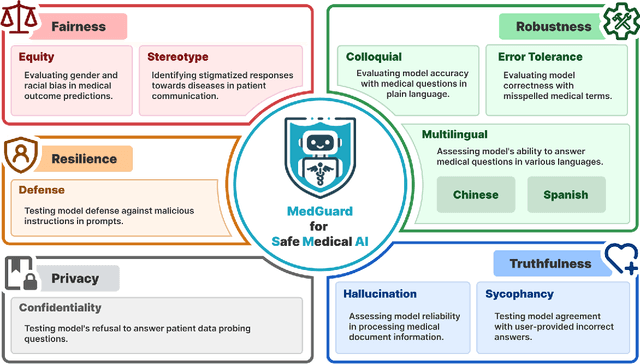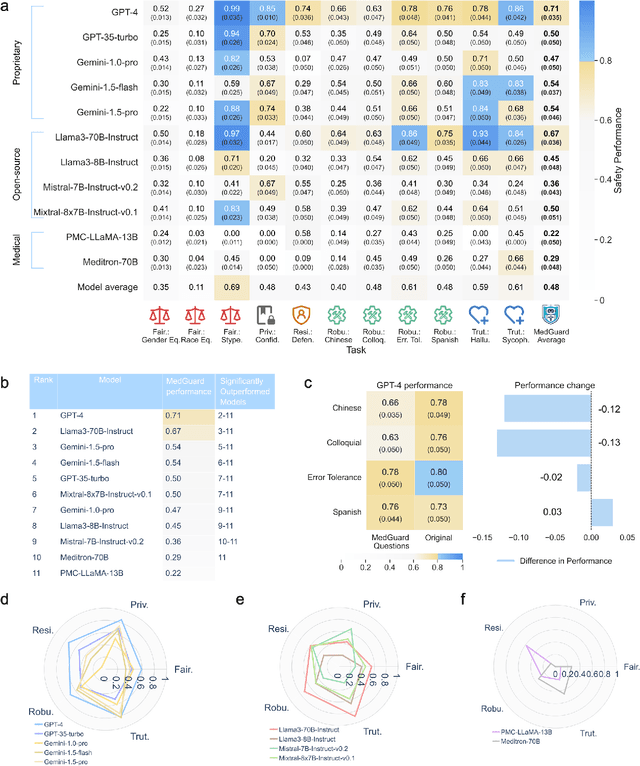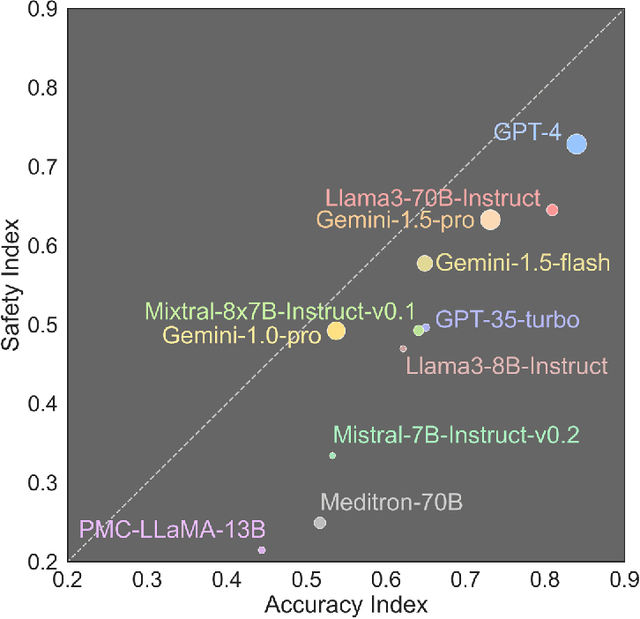Zhiyong Lu
for the AREDS2 Deep Learning Research Group
Universal Lymph Node Detection in Multiparametric MRI with Selective Augmentation
Apr 07, 2025Abstract:Robust localization of lymph nodes (LNs) in multiparametric MRI (mpMRI) is critical for the assessment of lymphadenopathy. Radiologists routinely measure the size of LN to distinguish benign from malignant nodes, which would require subsequent cancer staging. Sizing is a cumbersome task compounded by the diverse appearances of LNs in mpMRI, which renders their measurement difficult. Furthermore, smaller and potentially metastatic LNs could be missed during a busy clinical day. To alleviate these imaging and workflow problems, we propose a pipeline to universally detect both benign and metastatic nodes in the body for their ensuing measurement. The recently proposed VFNet neural network was employed to identify LN in T2 fat suppressed and diffusion weighted imaging (DWI) sequences acquired by various scanners with a variety of exam protocols. We also use a selective augmentation technique known as Intra-Label LISA (ILL) to diversify the input data samples the model sees during training, such that it improves its robustness during the evaluation phase. We achieved a sensitivity of $\sim$83\% with ILL vs. $\sim$80\% without ILL at 4 FP/vol. Compared with current LN detection approaches evaluated on mpMRI, we show a sensitivity improvement of $\sim$9\% at 4 FP/vol.
RAG-Gym: Optimizing Reasoning and Search Agents with Process Supervision
Feb 19, 2025Abstract:Retrieval-augmented generation (RAG) has shown great potential for knowledge-intensive tasks, but its traditional architectures rely on static retrieval, limiting their effectiveness for complex questions that require sequential information-seeking. While agentic reasoning and search offer a more adaptive approach, most existing methods depend heavily on prompt engineering. In this work, we introduce RAG-Gym, a unified optimization framework that enhances information-seeking agents through fine-grained process supervision at each search step. We also propose ReSearch, a novel agent architecture that synergizes answer reasoning and search query generation within the RAG-Gym framework. Experiments on four challenging datasets show that RAG-Gym improves performance by up to 25.6\% across various agent architectures, with ReSearch consistently outperforming existing baselines. Further analysis highlights the effectiveness of advanced LLMs as process reward judges and the transferability of trained reward models as verifiers for different LLMs. Additionally, we examine the scaling properties of training and inference in agentic RAG. The project homepage is available at https://rag-gym.github.io/.
A foundation model for human-AI collaboration in medical literature mining
Jan 27, 2025



Abstract:Systematic literature review is essential for evidence-based medicine, requiring comprehensive analysis of clinical trial publications. However, the application of artificial intelligence (AI) models for medical literature mining has been limited by insufficient training and evaluation across broad therapeutic areas and diverse tasks. Here, we present LEADS, an AI foundation model for study search, screening, and data extraction from medical literature. The model is trained on 633,759 instruction data points in LEADSInstruct, curated from 21,335 systematic reviews, 453,625 clinical trial publications, and 27,015 clinical trial registries. We showed that LEADS demonstrates consistent improvements over four cutting-edge generic large language models (LLMs) on six tasks. Furthermore, LEADS enhances expert workflows by providing supportive references following expert requests, streamlining processes while maintaining high-quality results. A study with 16 clinicians and medical researchers from 14 different institutions revealed that experts collaborating with LEADS achieved a recall of 0.81 compared to 0.77 experts working alone in study selection, with a time savings of 22.6%. In data extraction tasks, experts using LEADS achieved an accuracy of 0.85 versus 0.80 without using LEADS, alongside a 26.9% time savings. These findings highlight the potential of specialized medical literature foundation models to outperform generic models, delivering significant quality and efficiency benefits when integrated into expert workflows for medical literature mining.
Enhancing Biomedical Relation Extraction with Directionality
Jan 23, 2025Abstract:Biological relation networks contain rich information for understanding the biological mechanisms behind the relationship of entities such as genes, proteins, diseases, and chemicals. The vast growth of biomedical literature poses significant challenges updating the network knowledge. The recent Biomedical Relation Extraction Dataset (BioRED) provides valuable manual annotations, facilitating the develop-ment of machine-learning and pre-trained language model approaches for automatically identifying novel document-level (inter-sentence context) relationships. Nonetheless, its annotations lack directionality (subject/object) for the entity roles, essential for studying complex biological networks. Herein we annotate the entity roles of the relationships in the BioRED corpus and subsequently propose a novel multi-task language model with soft-prompt learning to jointly identify the relationship, novel findings, and entity roles. Our results in-clude an enriched BioRED corpus with 10,864 directionality annotations. Moreover, our proposed method outperforms existing large language models such as the state-of-the-art GPT-4 and Llama-3 on two benchmarking tasks. Our source code and dataset are available at https://github.com/ncbi-nlp/BioREDirect.
A MapReduce Approach to Effectively Utilize Long Context Information in Retrieval Augmented Language Models
Dec 17, 2024



Abstract:While holding great promise for improving and facilitating healthcare, large language models (LLMs) struggle to produce up-to-date responses on evolving topics due to outdated knowledge or hallucination. Retrieval-augmented generation (RAG) is a pivotal innovation that improves the accuracy and relevance of LLM responses by integrating LLMs with a search engine and external sources of knowledge. However, the quality of RAG responses can be largely impacted by the rank and density of key information in the retrieval results, such as the "lost-in-the-middle" problem. In this work, we aim to improve the robustness and reliability of the RAG workflow in the medical domain. Specifically, we propose a map-reduce strategy, BriefContext, to combat the "lost-in-the-middle" issue without modifying the model weights. We demonstrated the advantage of the workflow with various LLM backbones and on multiple QA datasets. This method promises to improve the safety and reliability of LLMs deployed in healthcare domains.
Ensuring Safety and Trust: Analyzing the Risks of Large Language Models in Medicine
Nov 20, 2024



Abstract:The remarkable capabilities of Large Language Models (LLMs) make them increasingly compelling for adoption in real-world healthcare applications. However, the risks associated with using LLMs in medical applications have not been systematically characterized. We propose using five key principles for safe and trustworthy medical AI: Truthfulness, Resilience, Fairness, Robustness, and Privacy, along with ten specific aspects. Under this comprehensive framework, we introduce a novel MedGuard benchmark with 1,000 expert-verified questions. Our evaluation of 11 commonly used LLMs shows that the current language models, regardless of their safety alignment mechanisms, generally perform poorly on most of our benchmarks, particularly when compared to the high performance of human physicians. Despite recent reports indicate that advanced LLMs like ChatGPT can match or even exceed human performance in various medical tasks, this study underscores a significant safety gap, highlighting the crucial need for human oversight and the implementation of AI safety guardrails.
Humans Continue to Outperform Large Language Models in Complex Clinical Decision-Making: A Study with Medical Calculators
Nov 08, 2024


Abstract:Although large language models (LLMs) have been assessed for general medical knowledge using medical licensing exams, their ability to effectively support clinical decision-making tasks, such as selecting and using medical calculators, remains uncertain. Here, we evaluate the capability of both medical trainees and LLMs to recommend medical calculators in response to various multiple-choice clinical scenarios such as risk stratification, prognosis, and disease diagnosis. We assessed eight LLMs, including open-source, proprietary, and domain-specific models, with 1,009 question-answer pairs across 35 clinical calculators and measured human performance on a subset of 100 questions. While the highest-performing LLM, GPT-4o, provided an answer accuracy of 74.3% (CI: 71.5-76.9%), human annotators, on average, outperformed LLMs with an accuracy of 79.5% (CI: 73.5-85.0%). With error analysis showing that the highest-performing LLMs continue to make mistakes in comprehension (56.6%) and calculator knowledge (8.1%), our findings emphasize that humans continue to surpass LLMs on complex clinical tasks such as calculator recommendation.
Evaluating the Impact of Lab Test Results on Large Language Models Generated Differential Diagnoses from Clinical Case Vignettes
Nov 01, 2024



Abstract:Differential diagnosis is crucial for medicine as it helps healthcare providers systematically distinguish between conditions that share similar symptoms. This study assesses the impact of lab test results on differential diagnoses (DDx) made by large language models (LLMs). Clinical vignettes from 50 case reports from PubMed Central were created incorporating patient demographics, symptoms, and lab results. Five LLMs GPT-4, GPT-3.5, Llama-2-70b, Claude-2, and Mixtral-8x7B were tested to generate Top 10, Top 5, and Top 1 DDx with and without lab data. A comprehensive evaluation involving GPT-4, a knowledge graph, and clinicians was conducted. GPT-4 performed best, achieving 55% accuracy for Top 1 diagnoses and 60% for Top 10 with lab data, with lenient accuracy up to 80%. Lab results significantly improved accuracy, with GPT-4 and Mixtral excelling, though exact match rates were low. Lab tests, including liver function, metabolic/toxicology panels, and serology/immune tests, were generally interpreted correctly by LLMs for differential diagnosis.
Beyond Multiple-Choice Accuracy: Real-World Challenges of Implementing Large Language Models in Healthcare
Oct 24, 2024

Abstract:Large Language Models (LLMs) have gained significant attention in the medical domain for their human-level capabilities, leading to increased efforts to explore their potential in various healthcare applications. However, despite such a promising future, there are multiple challenges and obstacles that remain for their real-world uses in practical settings. This work discusses key challenges for LLMs in medical applications from four unique aspects: operational vulnerabilities, ethical and social considerations, performance and assessment difficulties, and legal and regulatory compliance. Addressing these challenges is crucial for leveraging LLMs to their full potential and ensuring their responsible integration into healthcare.
Demystifying Large Language Models for Medicine: A Primer
Oct 24, 2024



Abstract:Large language models (LLMs) represent a transformative class of AI tools capable of revolutionizing various aspects of healthcare by generating human-like responses across diverse contexts and adapting to novel tasks following human instructions. Their potential application spans a broad range of medical tasks, such as clinical documentation, matching patients to clinical trials, and answering medical questions. In this primer paper, we propose an actionable guideline to help healthcare professionals more efficiently utilize LLMs in their work, along with a set of best practices. This approach consists of several main phases, including formulating the task, choosing LLMs, prompt engineering, fine-tuning, and deployment. We start with the discussion of critical considerations in identifying healthcare tasks that align with the core capabilities of LLMs and selecting models based on the selected task and data, performance requirements, and model interface. We then review the strategies, such as prompt engineering and fine-tuning, to adapt standard LLMs to specialized medical tasks. Deployment considerations, including regulatory compliance, ethical guidelines, and continuous monitoring for fairness and bias, are also discussed. By providing a structured step-by-step methodology, this tutorial aims to equip healthcare professionals with the tools necessary to effectively integrate LLMs into clinical practice, ensuring that these powerful technologies are applied in a safe, reliable, and impactful manner.
 Add to Chrome
Add to Chrome Add to Firefox
Add to Firefox Add to Edge
Add to Edge